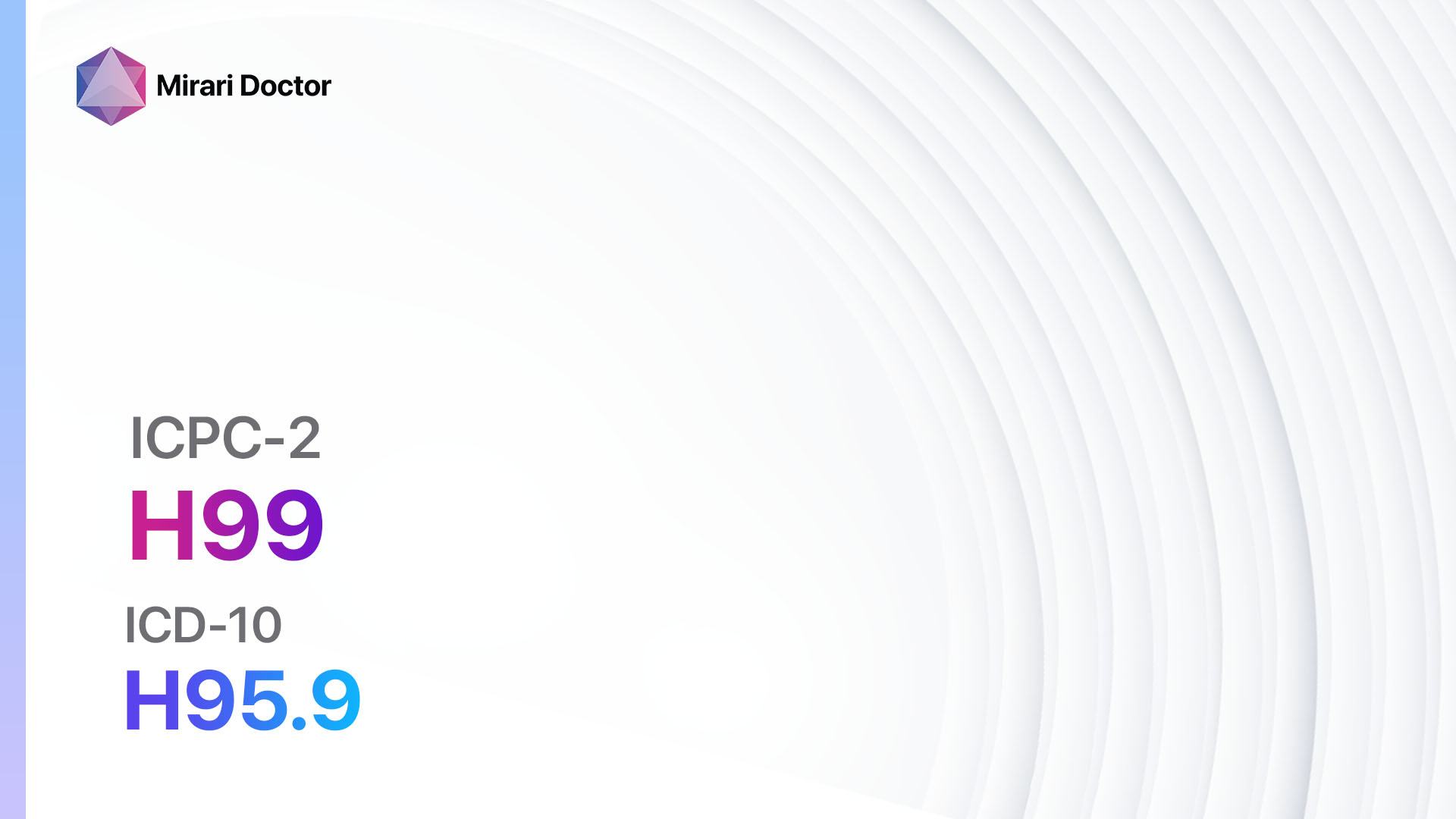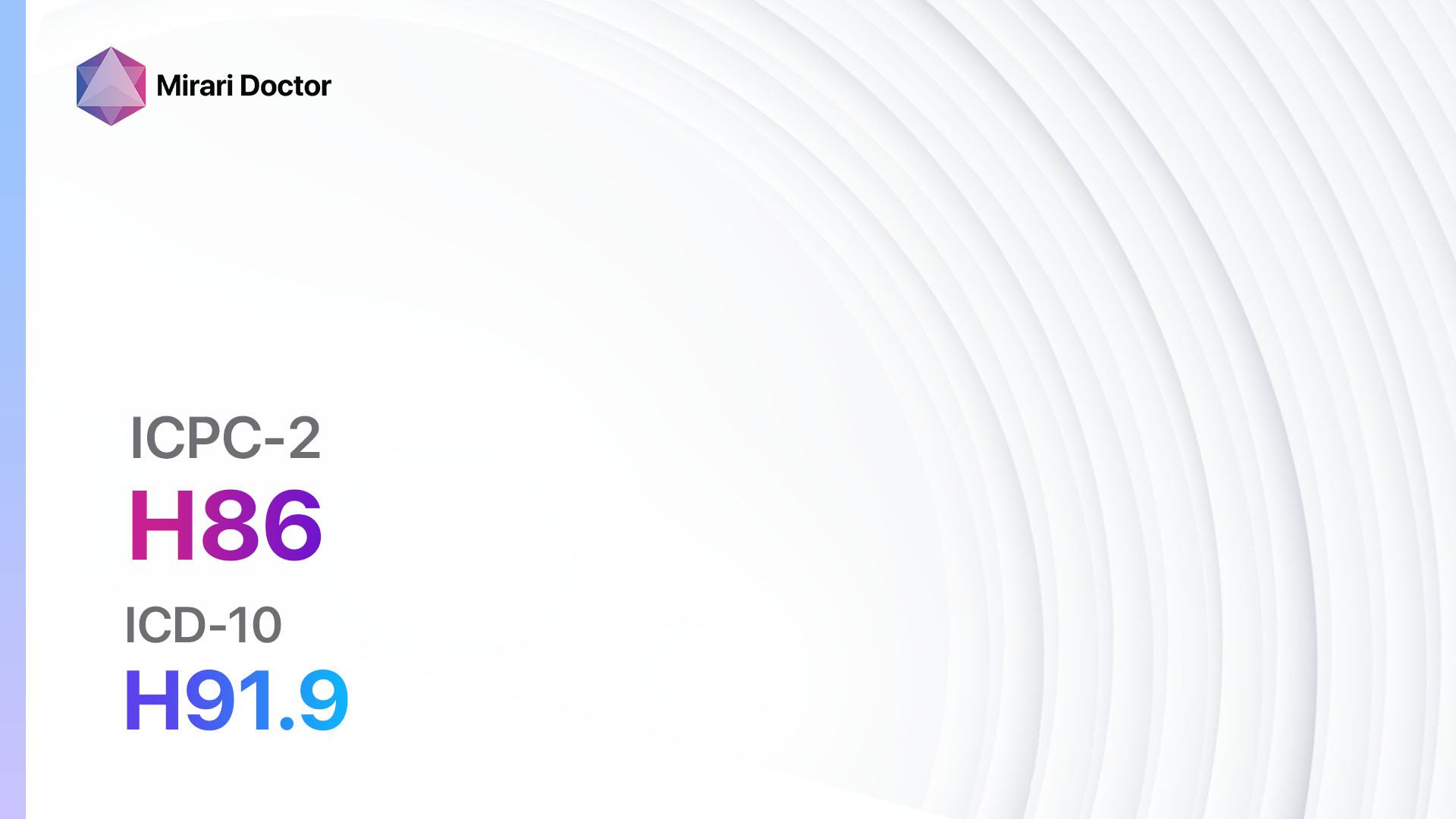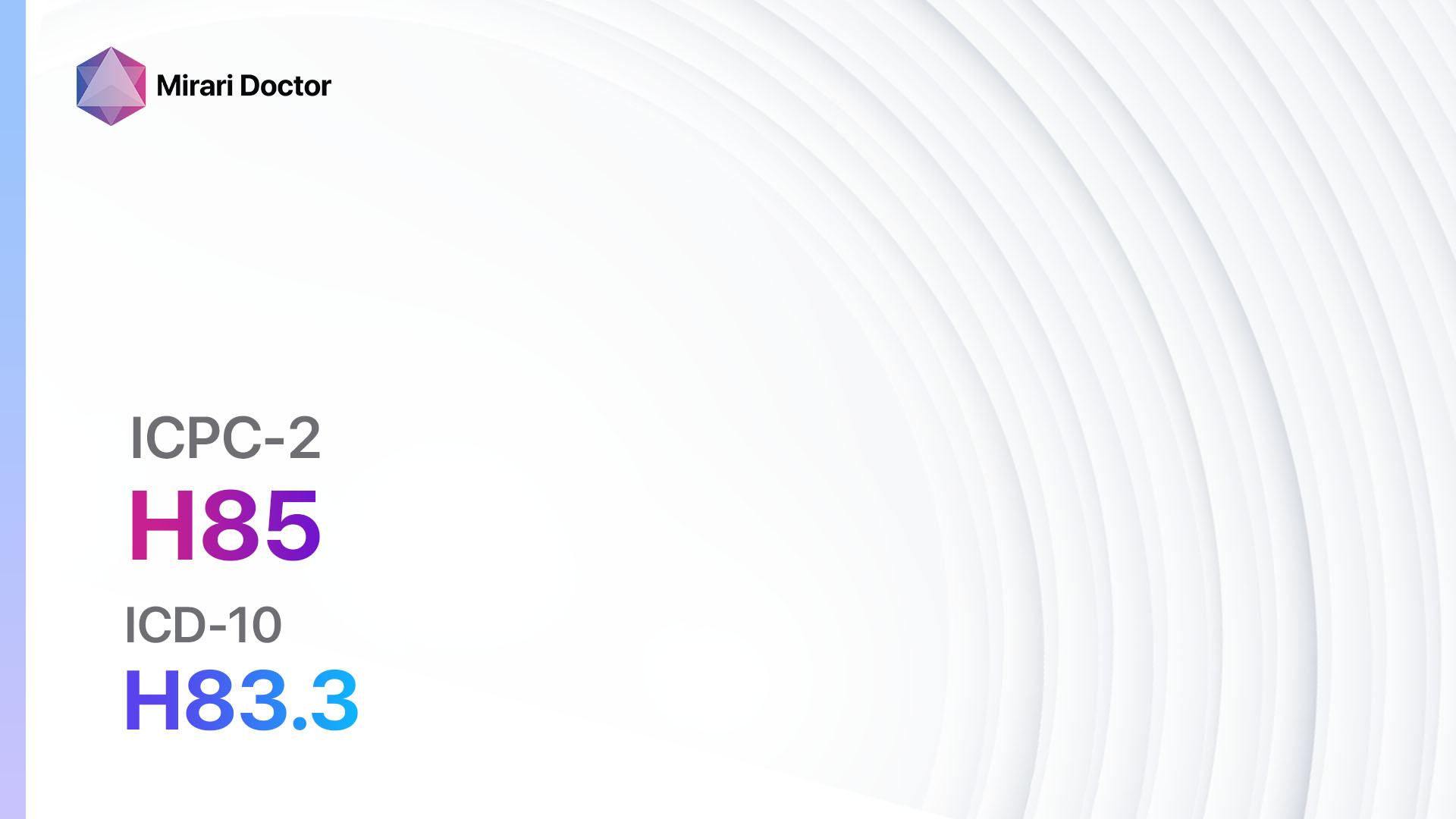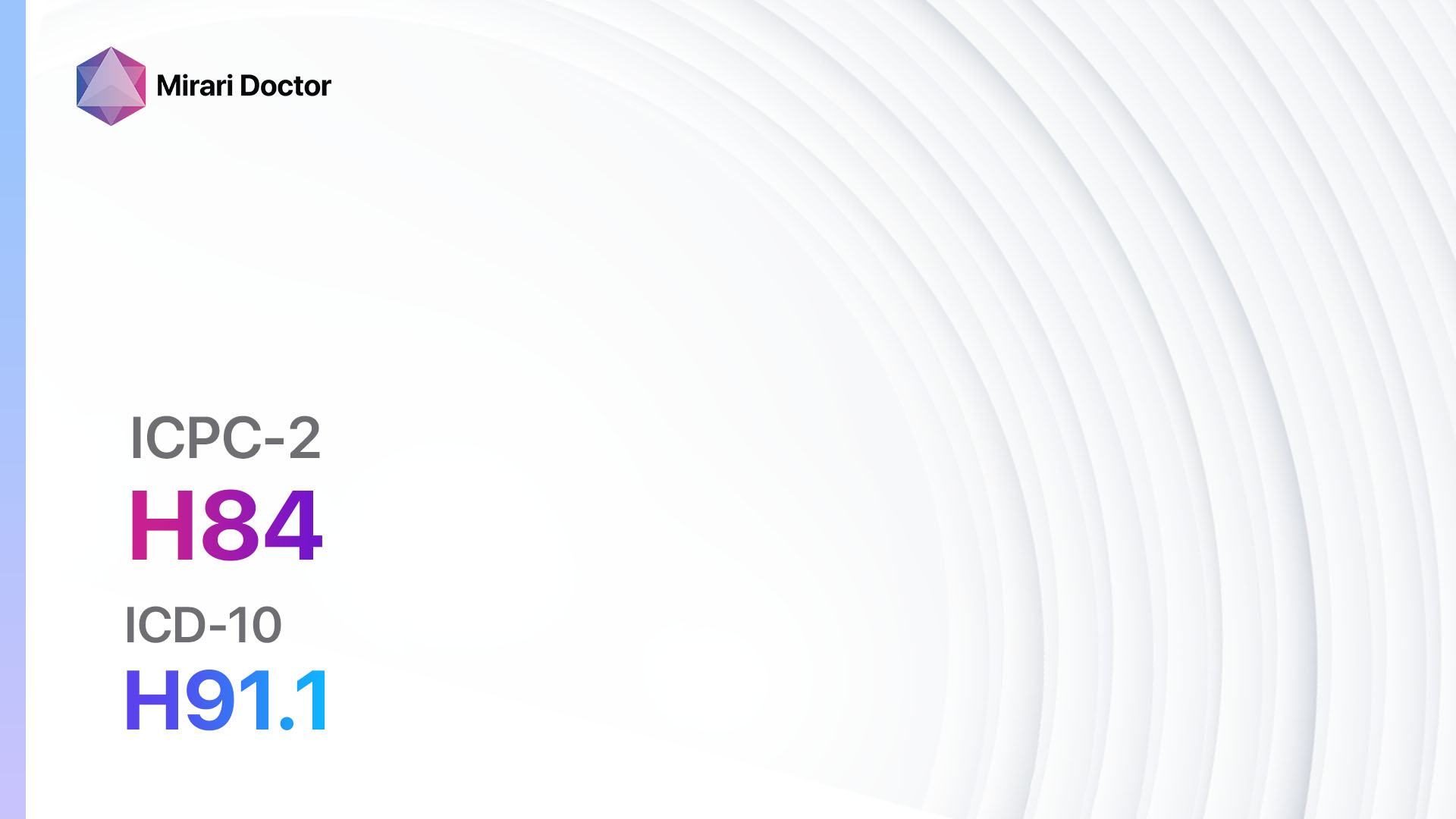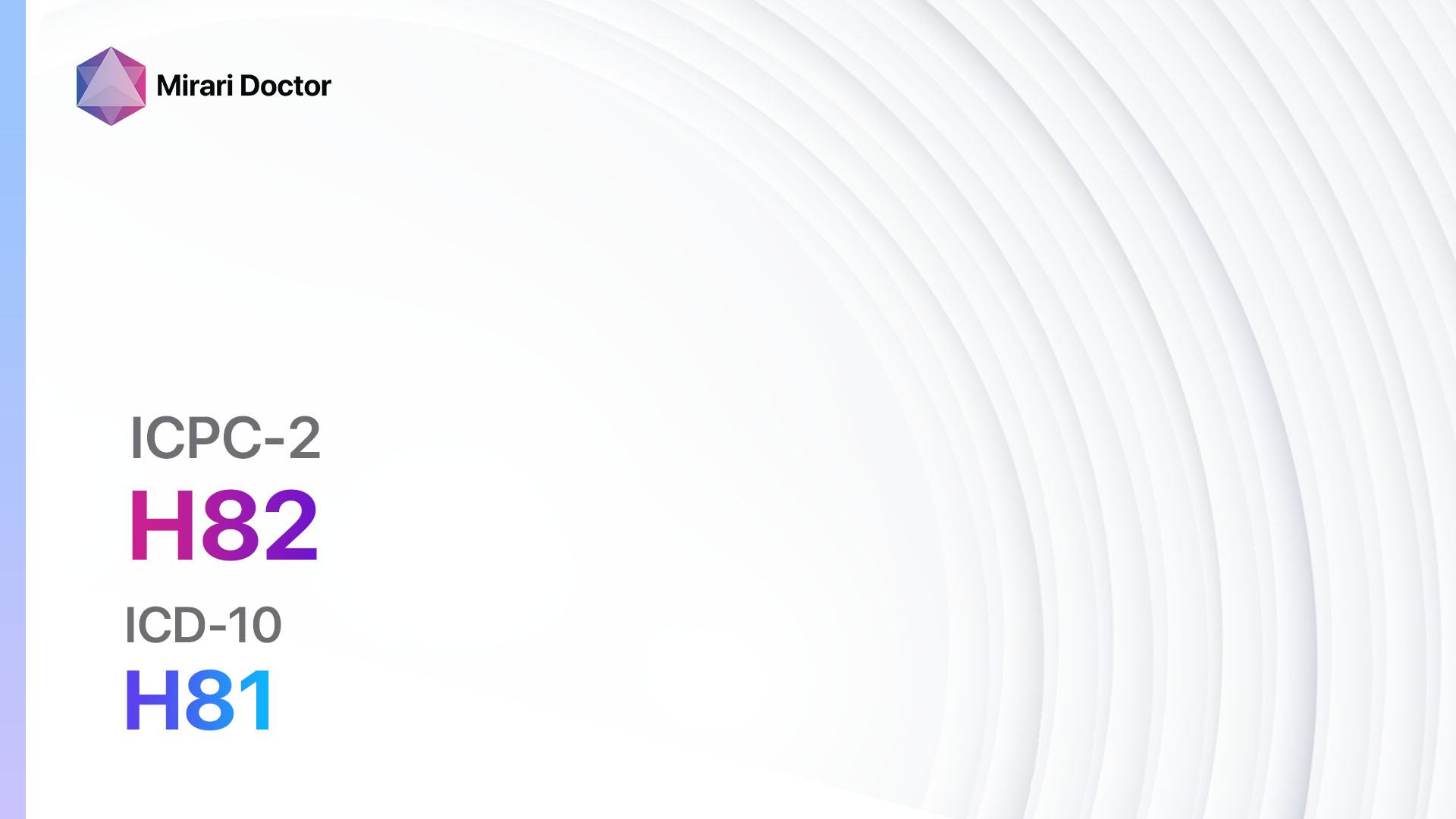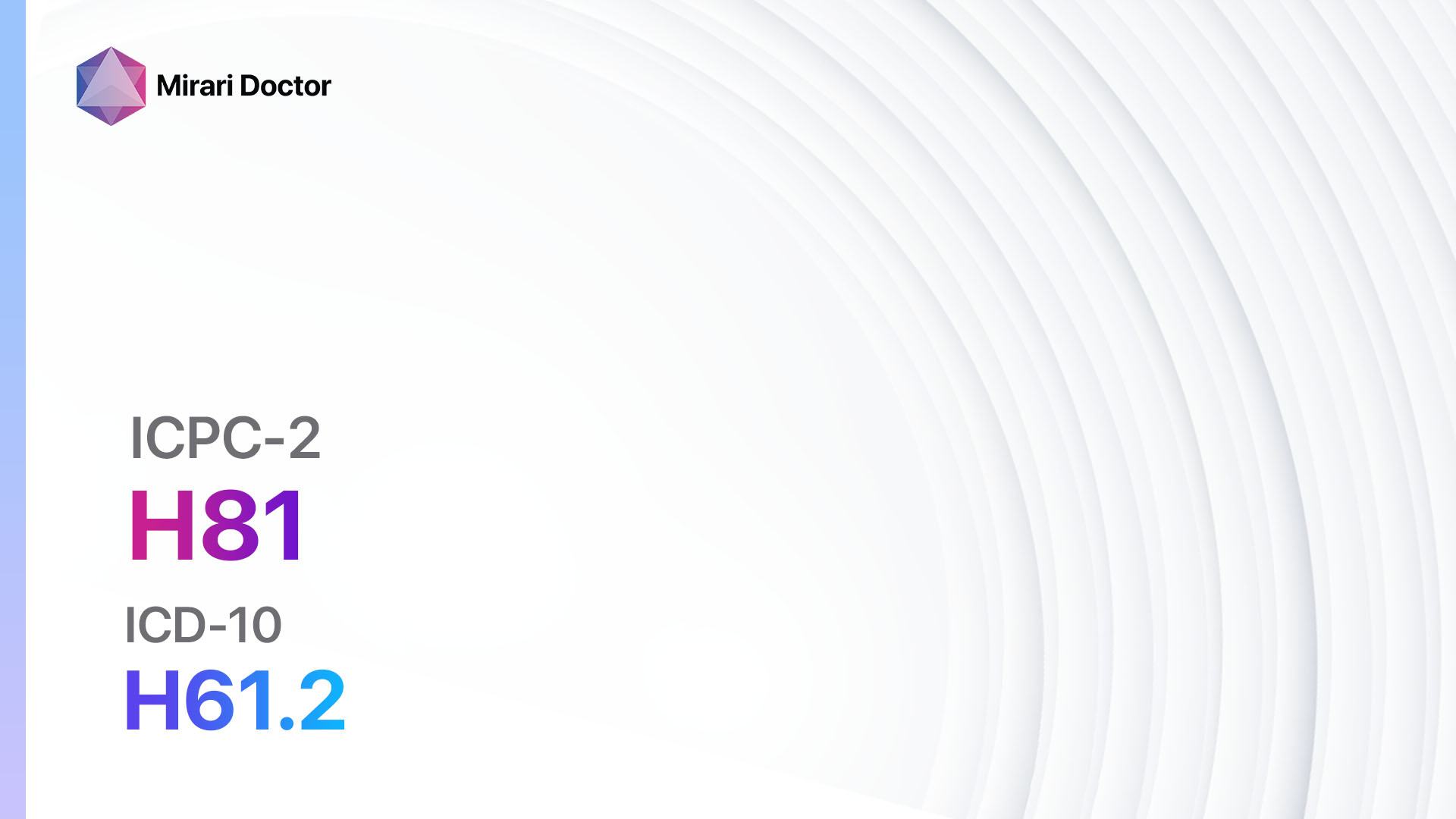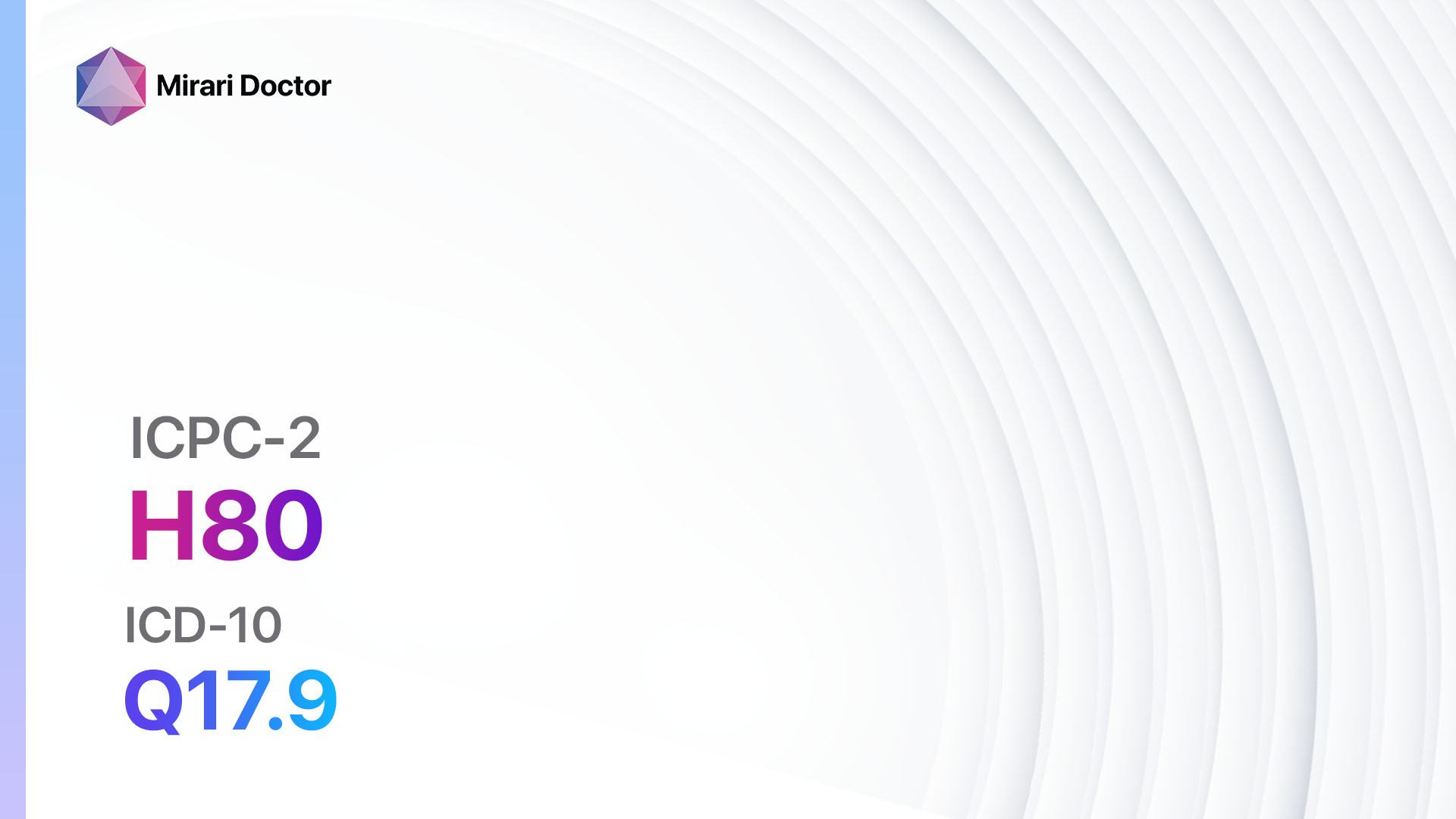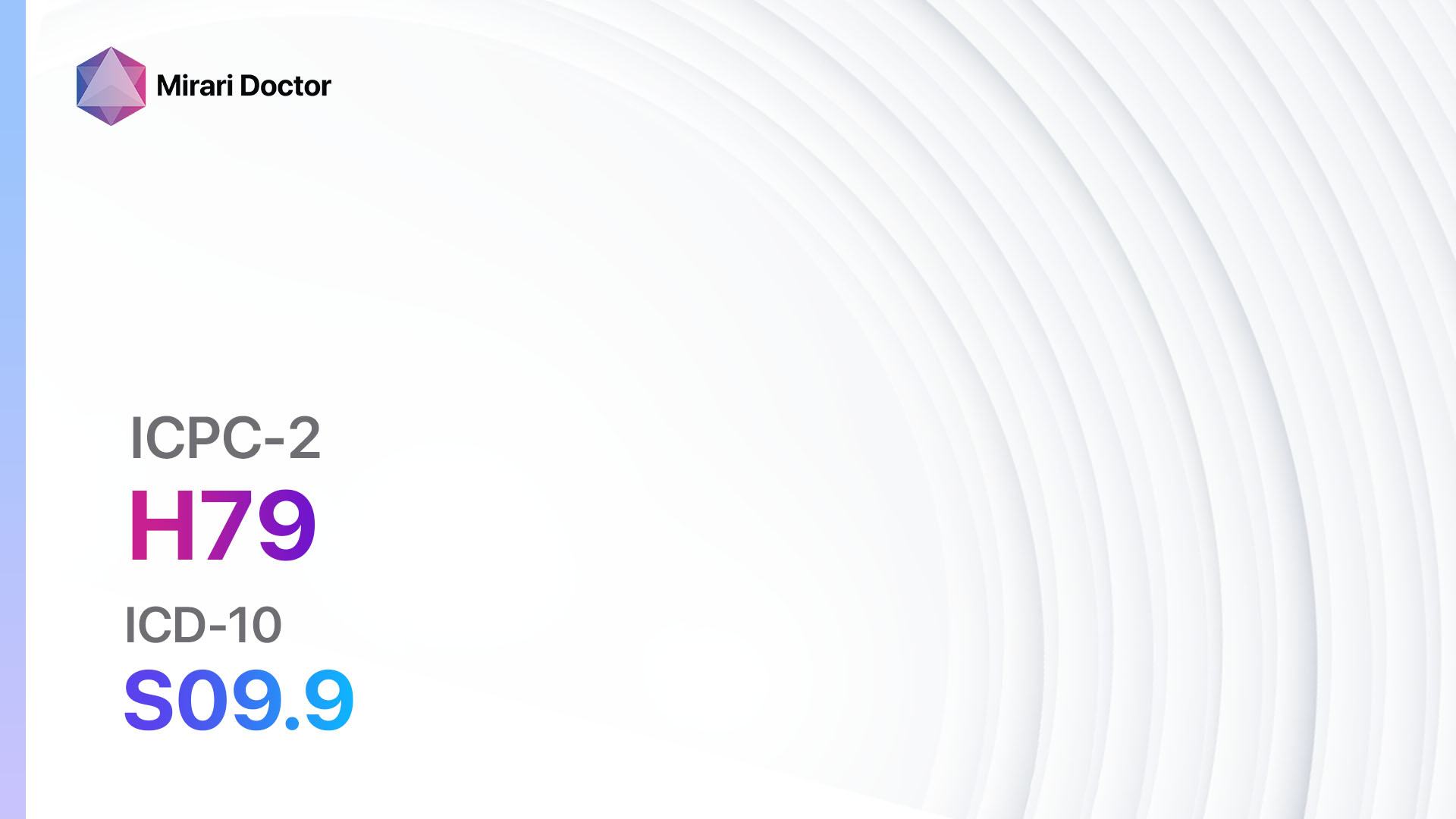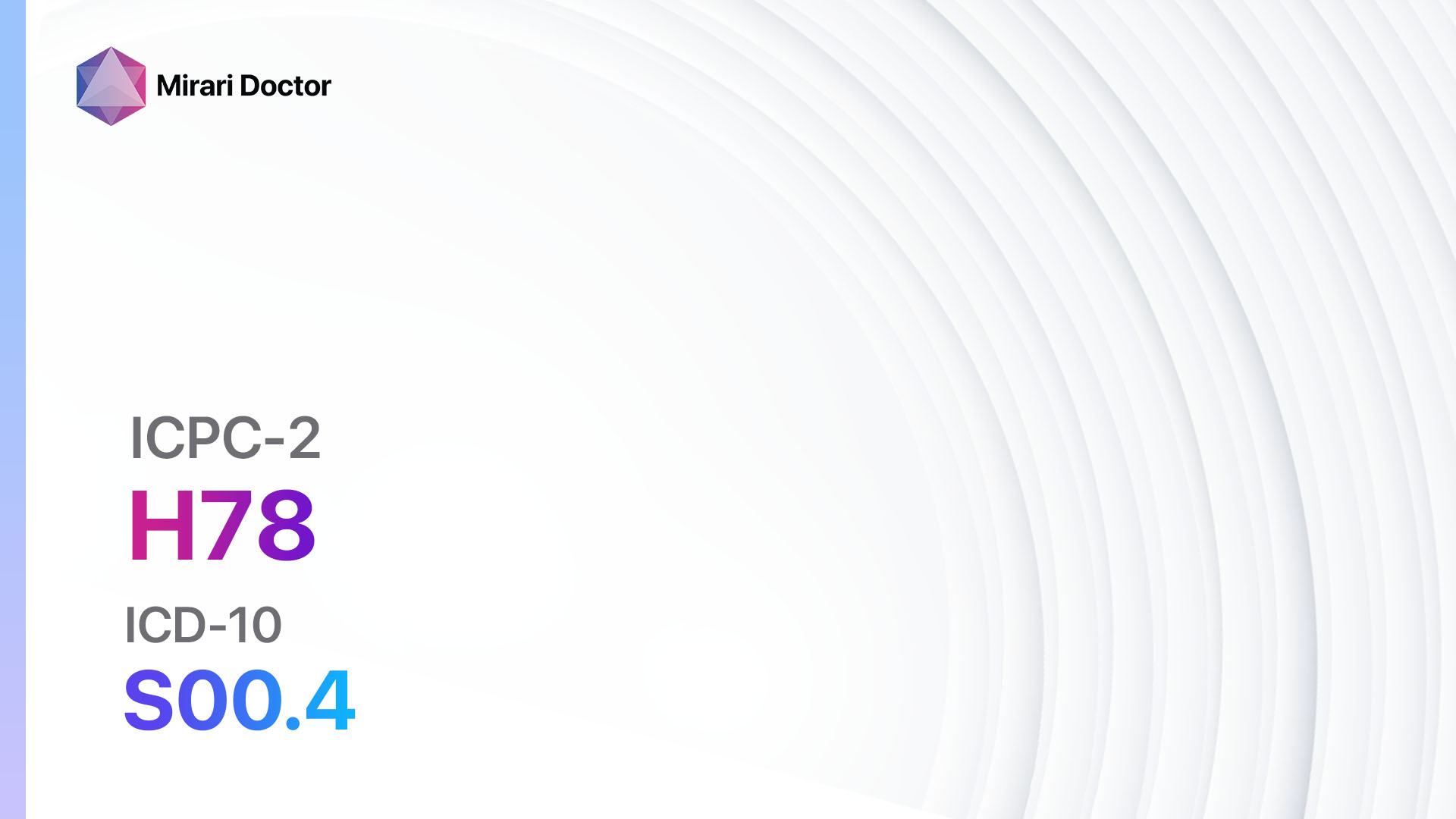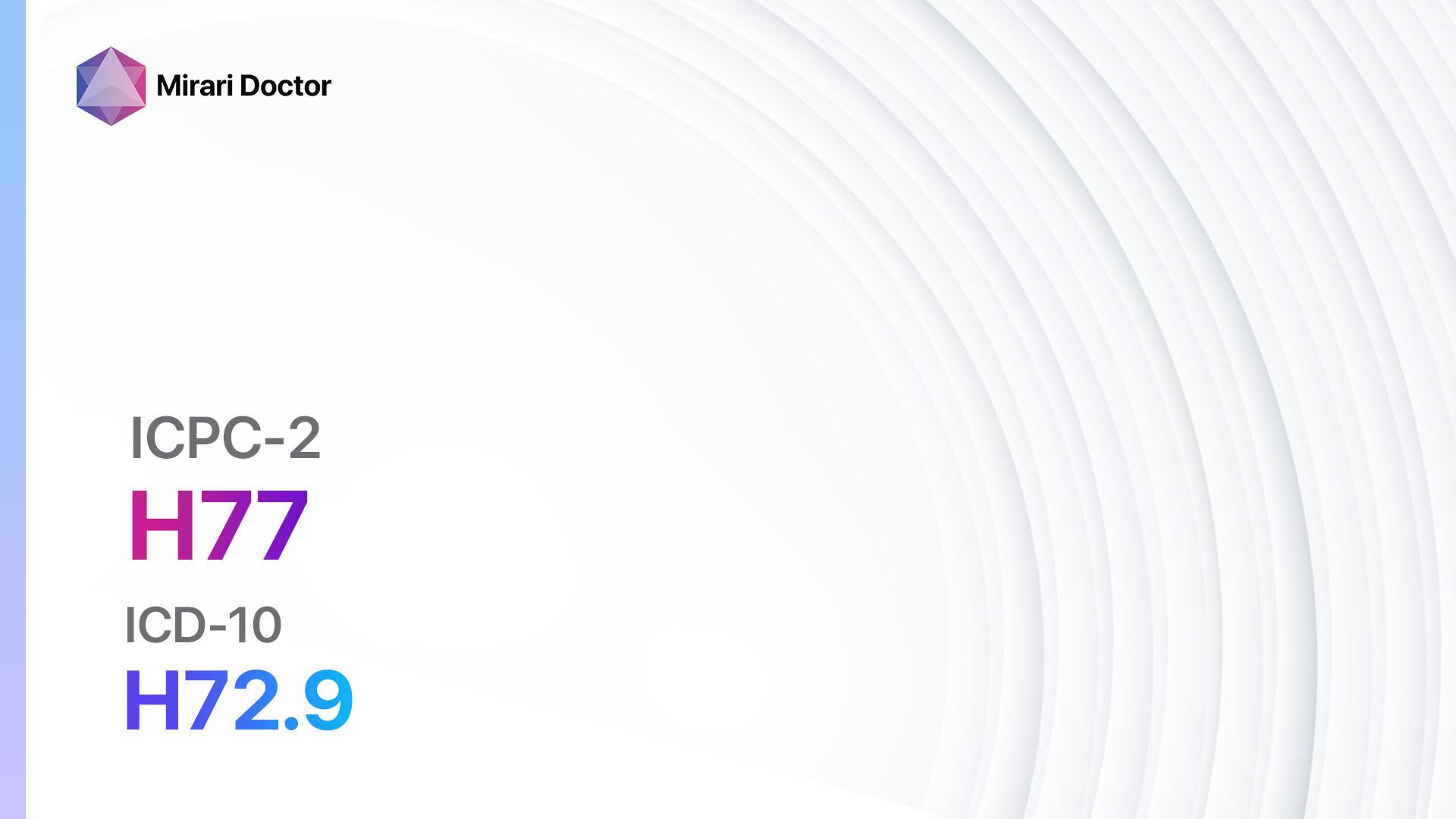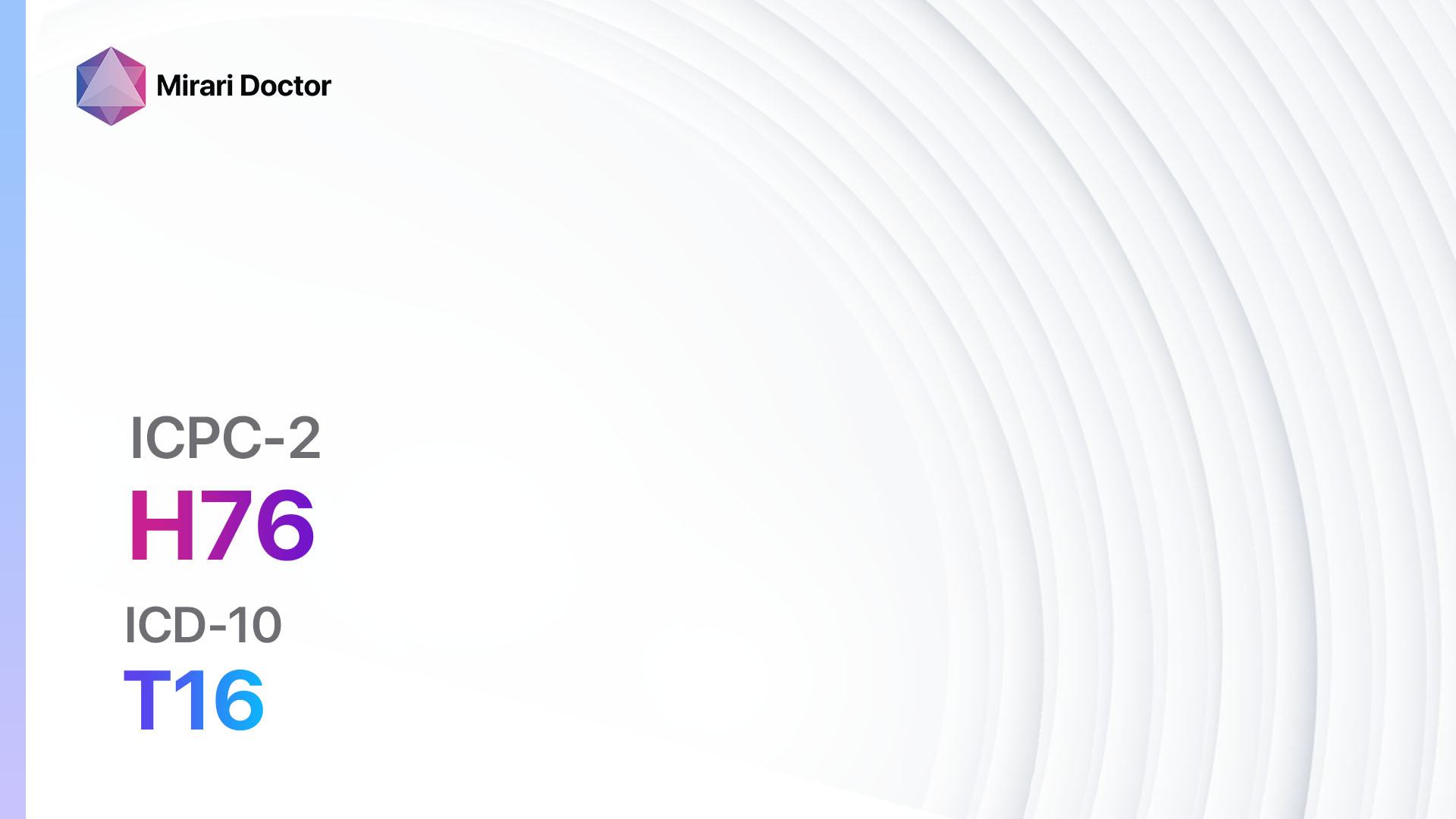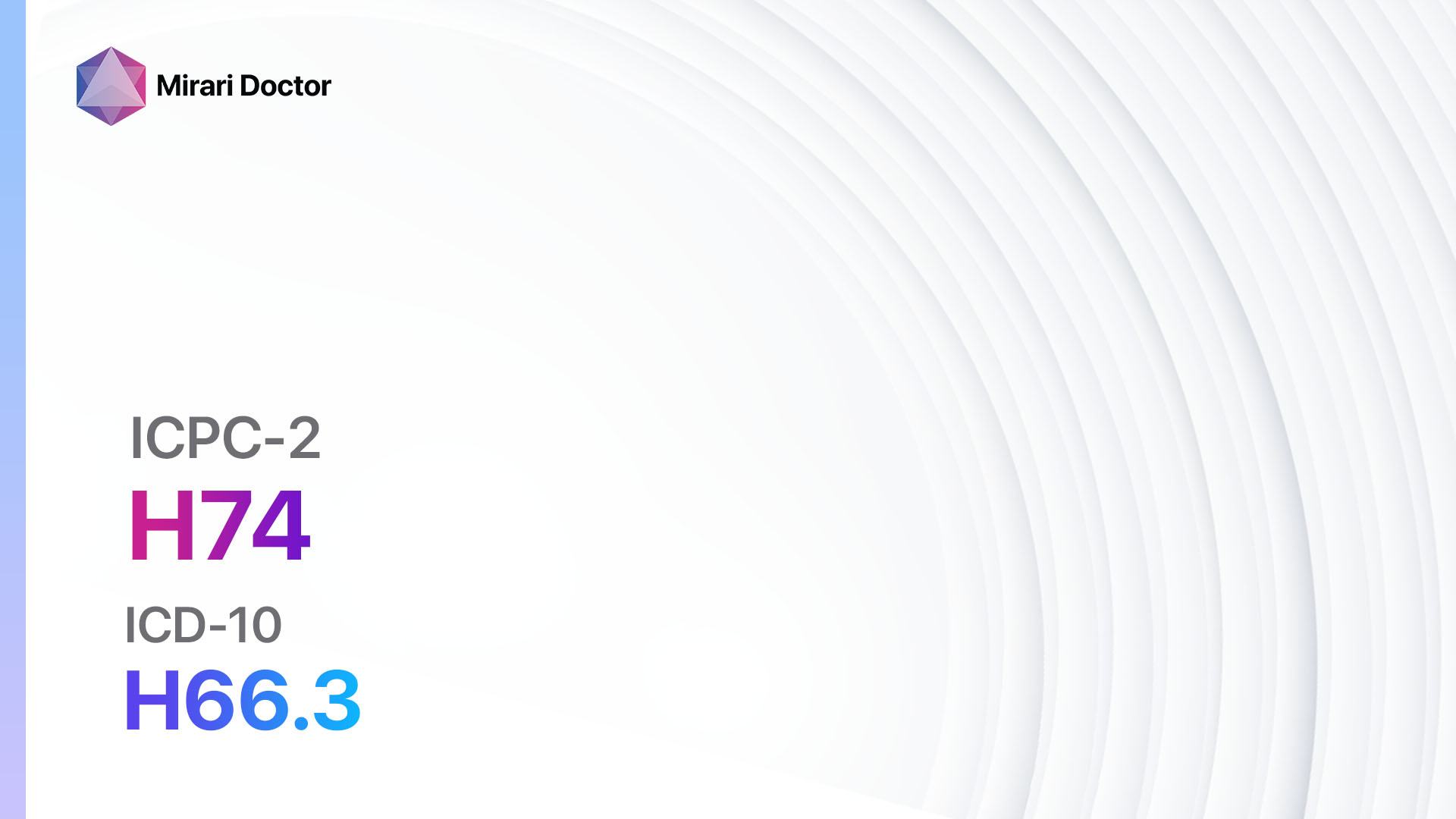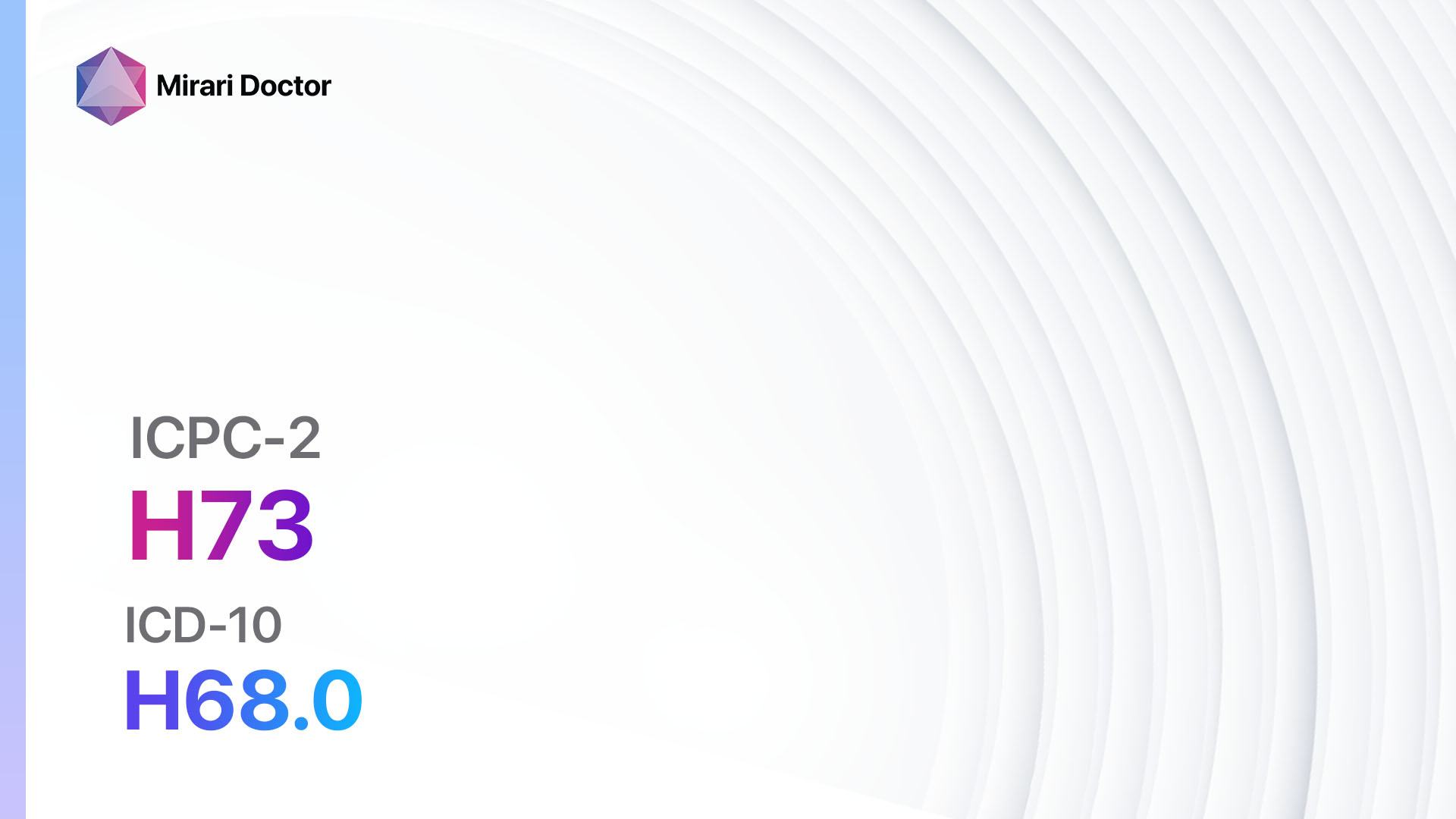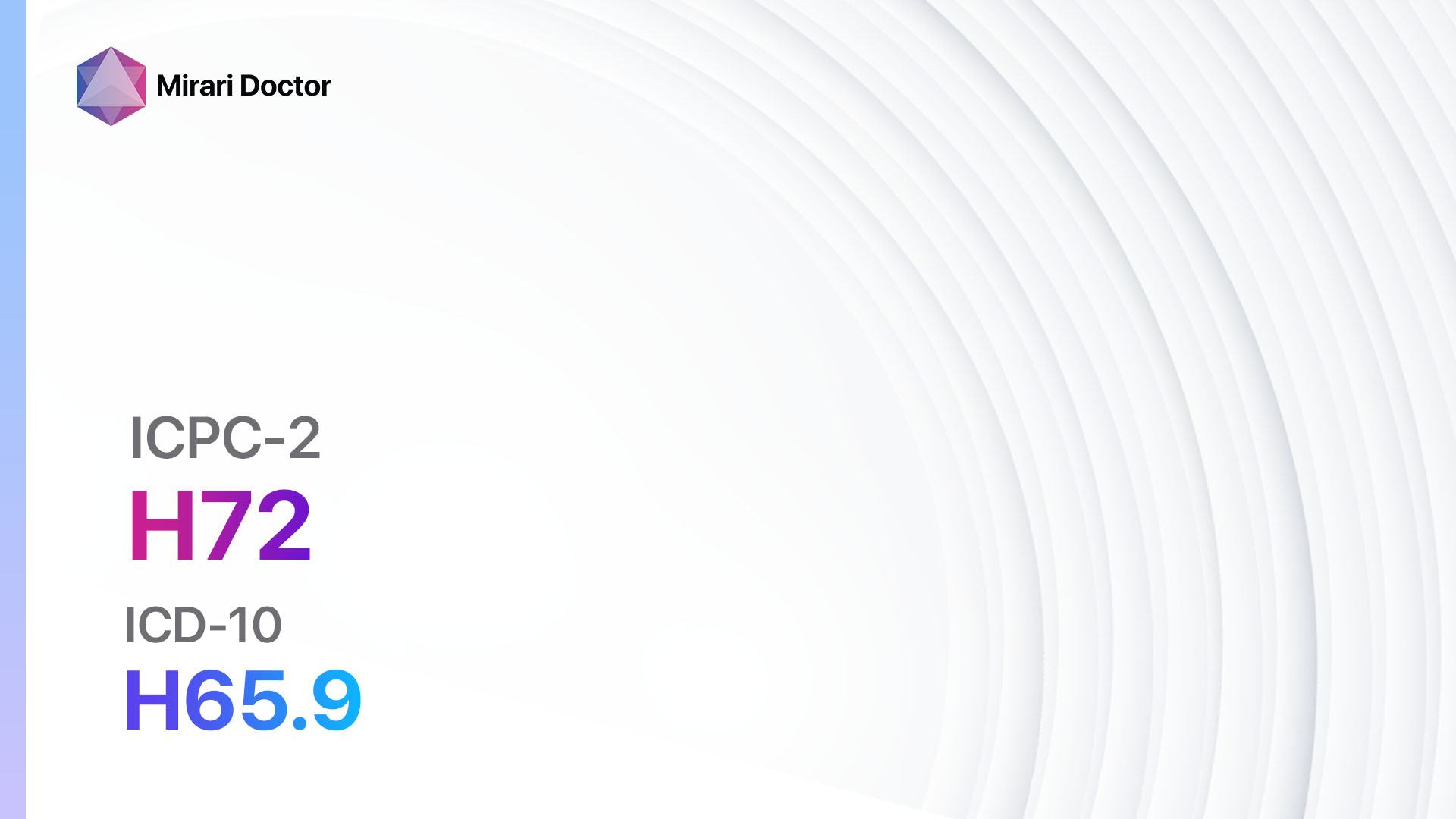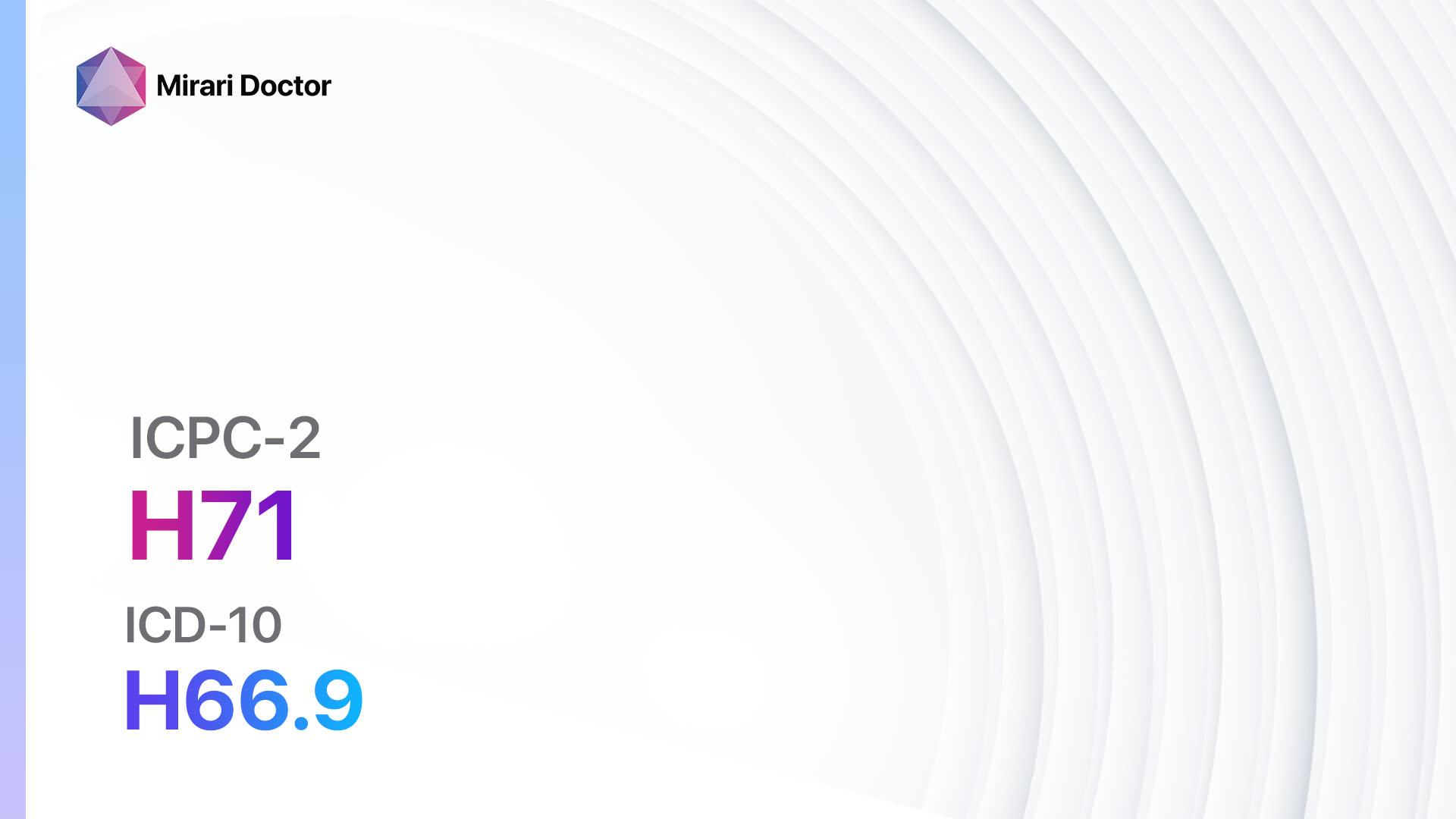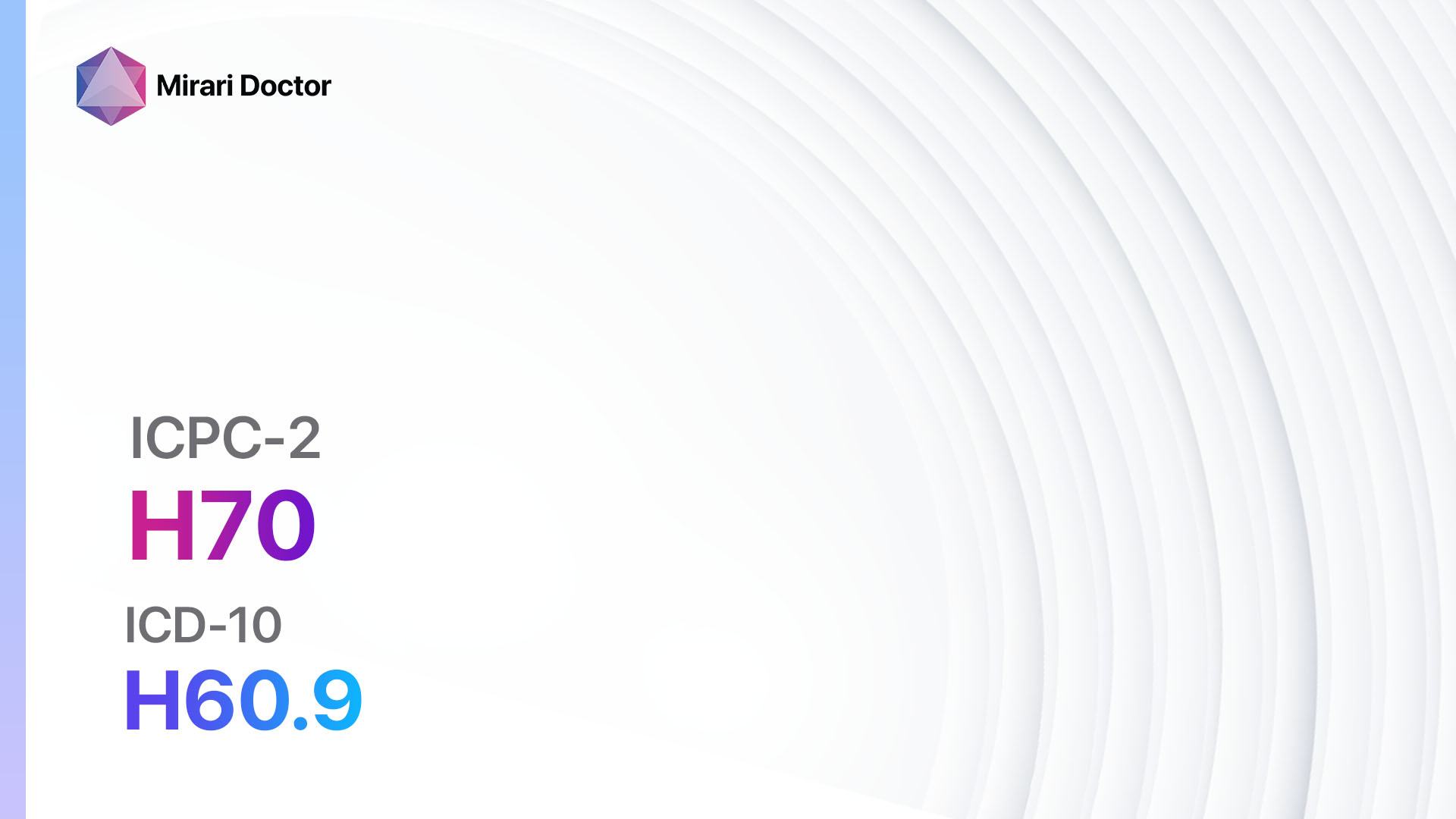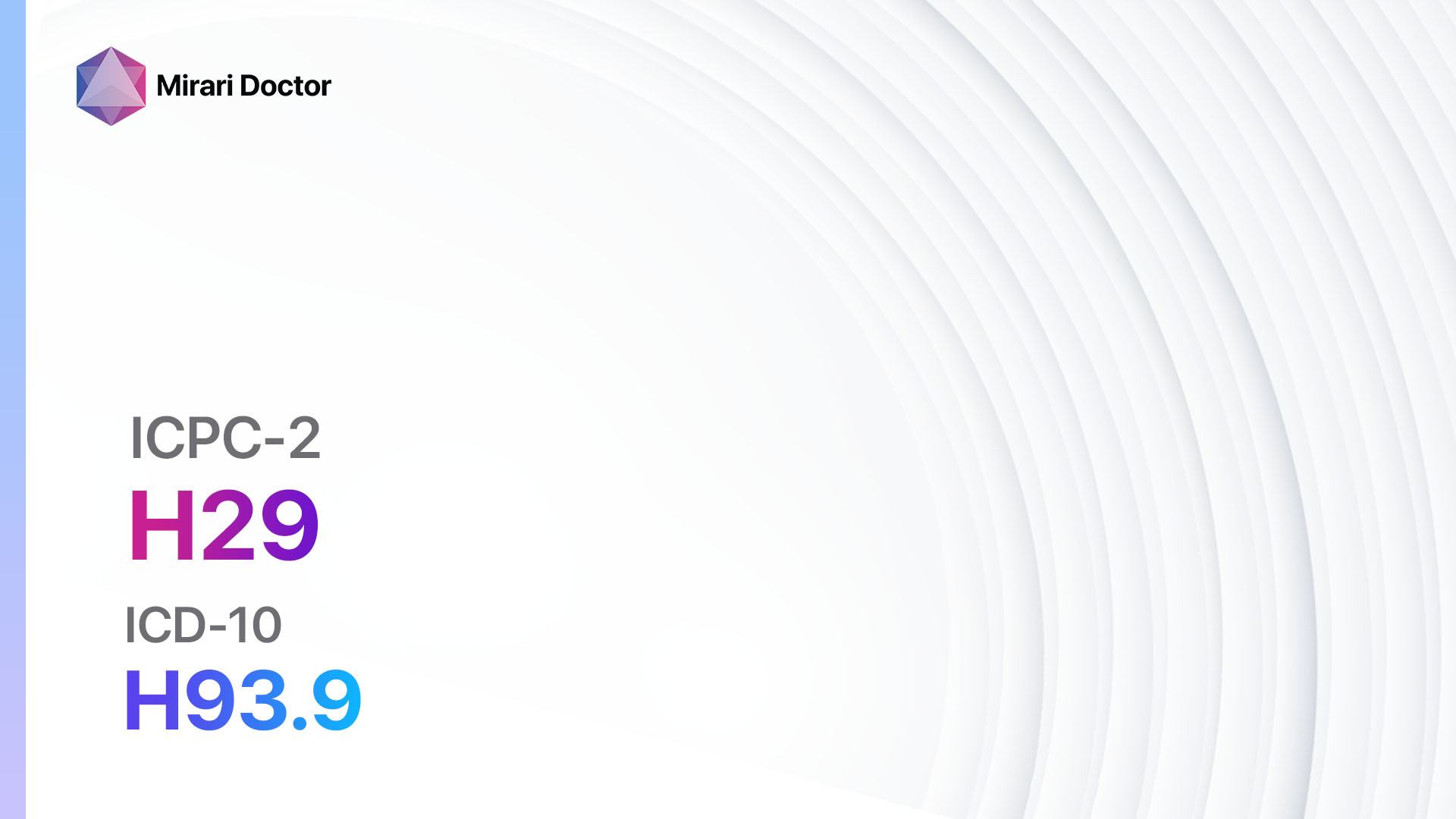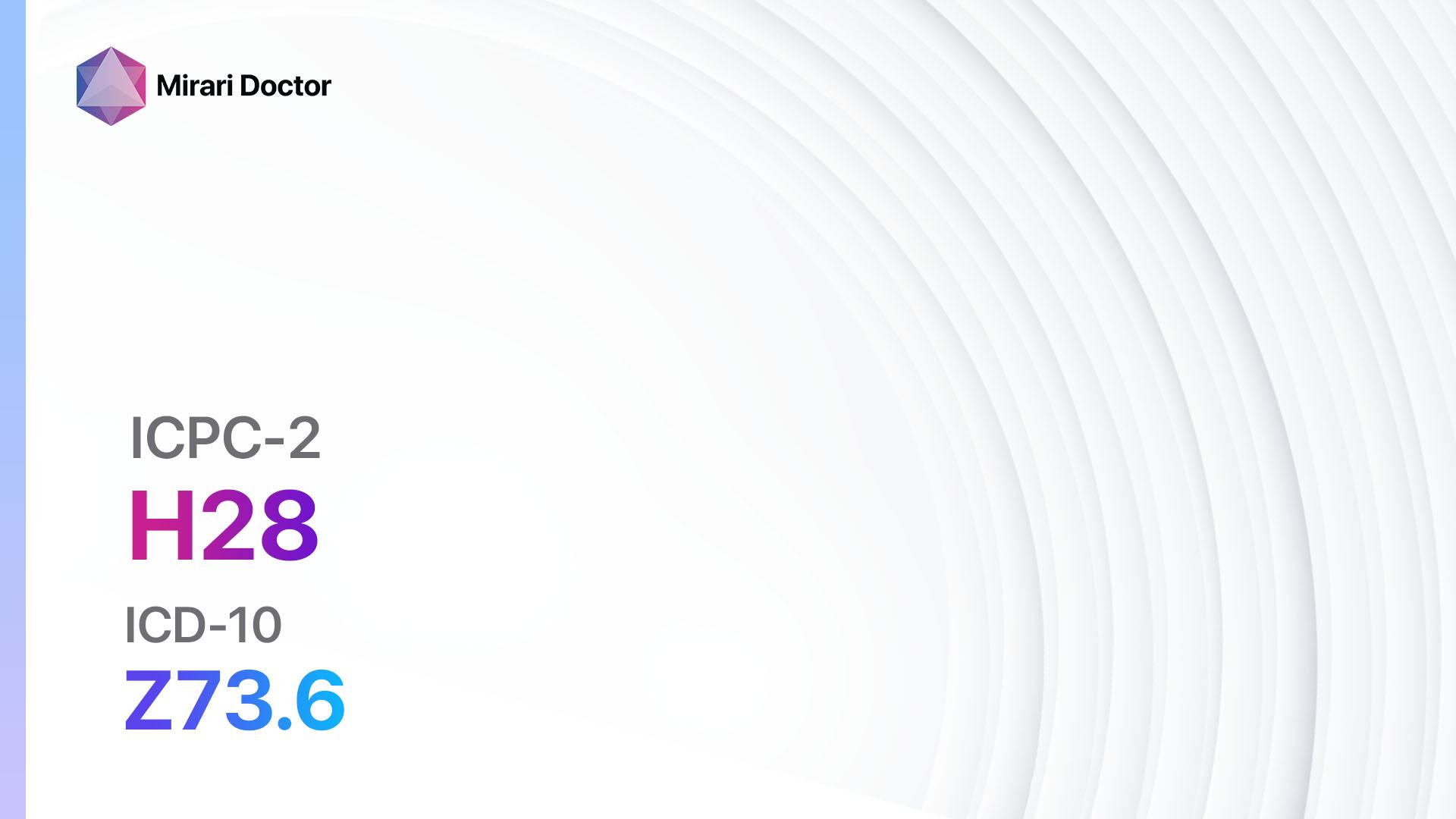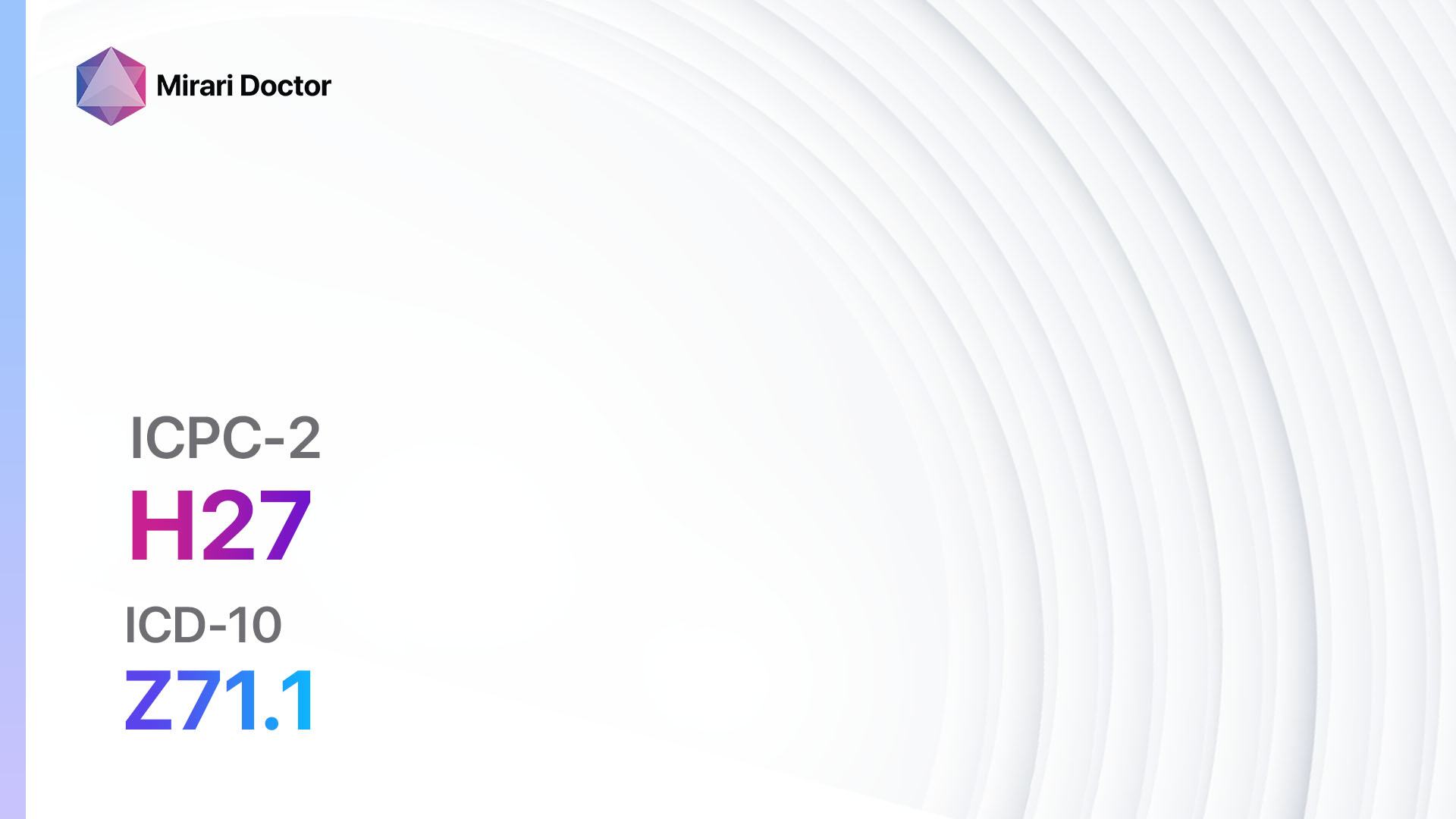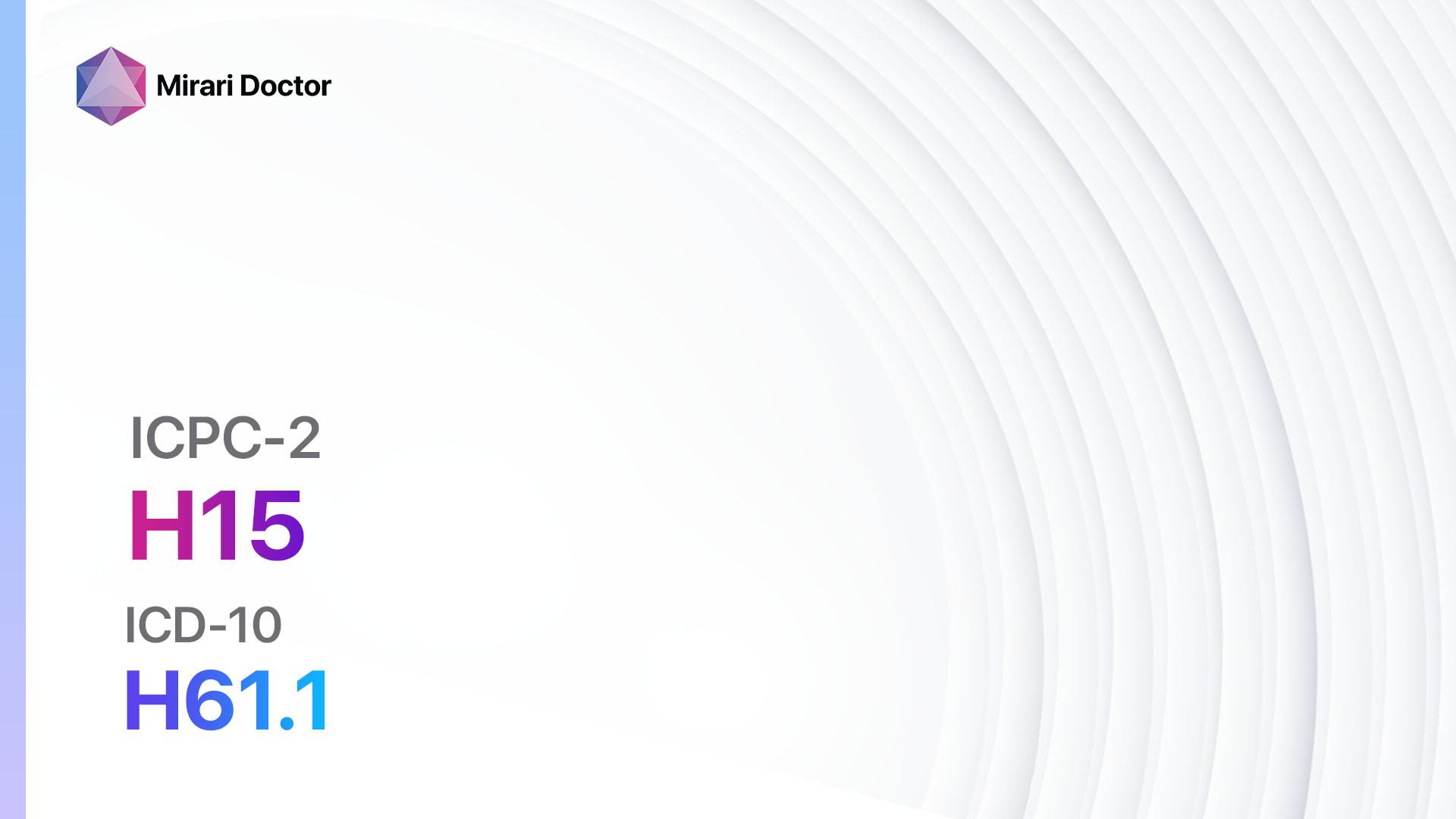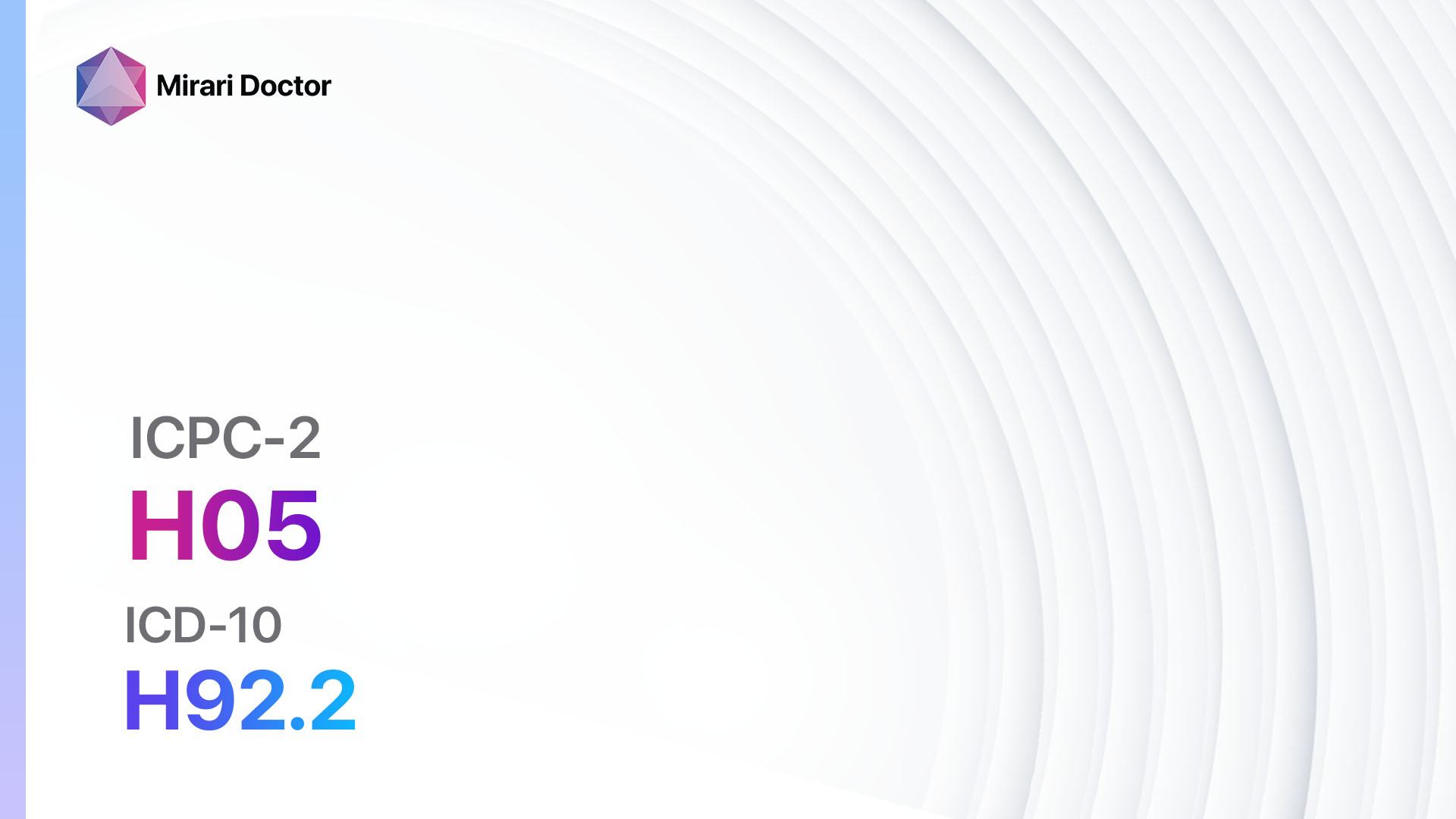
Introduction
Otosclerosis is a condition characterized by abnormal bone growth in the middle ear, specifically the stapes bone. This can result in hearing loss and other auditory symptoms[1]. The aim of this guide is to provide a comprehensive overview of otosclerosis, including its symptoms, causes, diagnostic steps, possible interventions, and lifestyle interventions.
Codes
Symptoms
- Hearing loss: Gradual hearing loss is the most common symptom of otosclerosis. It typically starts with difficulty hearing low-frequency sounds and may progress to include high-frequency sounds as well[4].
- Tinnitus: Some individuals with otosclerosis may experience a ringing, buzzing, or hissing sound in their ears[5].
- Vertigo: In rare cases, otosclerosis can cause dizziness or a spinning sensation[6].
- Ear fullness: Some individuals may feel a sensation of fullness or pressure in the affected ear[7].
Causes
- Genetic factors: Otosclerosis is believed to have a genetic component, as it tends to run in families[8].
- Hormonal factors: Changes in hormone levels, such as those that occur during pregnancy, may contribute to the development or progression of otosclerosis[9].
Diagnostic Steps
Medical History
- Gather information about the patient’s symptoms, including the onset, progression, and severity.
- Ask about any family history of hearing loss or otosclerosis.
- Inquire about any previous ear infections or trauma to the ears.
- Assess for any risk factors, such as pregnancy or hormonal imbalances.
Physical Examination
- Examine the ears using an otoscope to assess the condition of the ear canal and eardrum.
- Perform a tuning fork test to evaluate the patient’s hearing ability and determine if there is conductive hearing loss[10].
- Check for any signs of dizziness or balance issues.
Laboratory Tests
- Blood tests: There are no specific blood tests for otosclerosis, but they may be done to rule out other potential causes of hearing loss or to assess hormonal levels.
- Genetic testing: In some cases, genetic testing may be recommended to identify any specific genetic mutations associated with otosclerosis.
Diagnostic Imaging
- X-rays: X-rays of the temporal bones may be performed to visualize any abnormal bone growth or changes in the middle ear.
- CT scan: A CT scan can provide detailed images of the temporal bones and help identify any abnormalities or changes in bone density.
- MRI: An MRI may be recommended to rule out other potential causes of hearing loss or to assess the extent of the disease.
Other Tests
- Audiometry: A comprehensive hearing test is essential to evaluate the patient’s hearing ability and determine the type and degree of hearing loss.
- Tympanometry: This test measures the movement of the eardrum in response to changes in air pressure and can help assess middle ear function.
- Otoacoustic emissions (OAE) test: This test measures the sounds produced by the inner ear in response to sound stimulation and can help assess the function of the cochlea.
Follow-up and Patient Education
- Schedule regular follow-up appointments to monitor the progression of the disease and assess the effectiveness of interventions.
- Provide patient education on the nature of otosclerosis, its potential complications, and the available treatment options.
Possible Interventions
Traditional Interventions
Medications:
Top 5 drugs for Otosclerosis:
- Sodium fluoride: This medication may help slow down the progression of otosclerosis by promoting bone growth and reducing abnormal bone remodeling.
- Cost: $20-$50/month.
- Contraindications: Hypersensitivity to sodium fluoride.
- Side effects: Upset stomach, diarrhea.
- Severe side effects: None reported.
- Drug interactions: None reported.
- Warning: Regular monitoring of renal function is required.
- Calcium channel blockers (e.g., Verapamil): These medications may help reduce abnormal bone growth and improve hearing in some individuals with otosclerosis.
- Cost: $10-$30/month.
- Contraindications: Hypersensitivity to calcium channel blockers, severe heart failure.
- Side effects: Dizziness, headache, constipation.
- Severe side effects: Low blood pressure, heart rhythm disturbances.
- Drug interactions: Grapefruit juice, other blood pressure medications.
- Warning: Regular monitoring of blood pressure and heart rate is required.
- Bisphosphonates (e.g., Alendronate): These medications may help slow down bone loss and reduce abnormal bone remodeling in otosclerosis.
- Cost: $10-$50/month.
- Contraindications: Hypersensitivity to bisphosphonates, severe kidney disease.
- Side effects: Upset stomach, heartburn, muscle pain.
- Severe side effects: Osteonecrosis of the jaw, atypical fractures.
- Drug interactions: Calcium supplements, antacids.
- Warning: Regular dental check-ups are recommended.
- Fluoride supplements: These supplements may help promote bone growth and reduce abnormal bone remodeling in otosclerosis.
- Cost: $5-$20/month.
- Contraindications: Hypersensitivity to fluoride.
- Side effects: Upset stomach, diarrhea.
- Severe side effects: None reported.
- Drug interactions: None reported.
- Warning: Regular monitoring of renal function is required.
- Hormone therapy: In some cases, hormone therapy may be considered to help manage otosclerosis associated with hormonal imbalances.
- Cost: Varies depending on the specific hormone therapy.
- Contraindications: Hormone-sensitive cancers, history of blood clots.
- Side effects: Varies depending on the specific hormone therapy.
- Severe side effects: Varies depending on the specific hormone therapy.
- Drug interactions: Varies depending on the specific hormone therapy.
- Warning: Hormone therapy should be used with caution and under the guidance of a healthcare professional.
Alternative Drugs:
- Vitamin D supplements: Vitamin D plays a role in bone health and may help support bone remodeling in otosclerosis.
- Magnesium supplements: Magnesium deficiency has been associated with otosclerosis, and supplementation may help improve symptoms.
- Calcitonin: This hormone can help regulate calcium levels and may be used in some cases of otosclerosis.
Surgical Procedures:
- Stapedectomy: This surgical procedure involves removing the stapes bone and replacing it with a prosthesis to improve hearing.
- Cost: $10,000-$30,000.
- Contraindications: Severe ear infections, active middle ear disease.
- Side effects: Temporary dizziness, taste disturbances.
- Severe side effects: Hearing loss, facial nerve injury.
- Drug interactions: None reported.
- Warning: Recovery time may vary, and regular follow-up appointments are necessary.
- Stapedotomy: This surgical procedure is similar to stapedectomy but involves creating a small hole in the stapes footplate and placing a prosthesis to improve hearing.
- Cost: $10,000-$30,000.
- Contraindications: Severe ear infections, active middle ear disease.
- Side effects: Temporary dizziness, taste disturbances.
- Severe side effects: Hearing loss, facial nerve injury.
- Drug interactions: None reported.
- Warning: Recovery time may vary, and regular follow-up appointments are necessary.
Alternative Interventions
- Hearing aids: Hearing aids can help individuals with otosclerosis improve their hearing and communication abilities.
- Cost: $1,000-$5,000 per ear.
- Assistive listening devices: These devices, such as FM systems or loop systems, can help individuals with otosclerosis better hear in specific situations, such as in noisy environments or during phone conversations.
- Cost: $100-$500.
- Cochlear implants: In severe cases of otosclerosis where hearing aids are not effective, cochlear implants may be considered. These devices bypass the damaged parts of the ear and directly stimulate the auditory nerve.
- Cost: $50,000-$100,000.
- Bone-anchored hearing systems: These devices use bone conduction to transmit sound vibrations directly to the inner ear, bypassing the middle ear.
- Cost: $5,000-$10,000.
Lifestyle Interventions
- Avoiding loud noises: Limit exposure to loud noises, as they can worsen hearing loss in individuals with otosclerosis.
- Quitting smoking: Smoking can worsen hearing loss and may contribute to the progression of otosclerosis.
- Managing stress: Stress can exacerbate symptoms of tinnitus and may worsen overall well-being. Stress management techniques, such as exercise, meditation, or counseling, may be beneficial.
- Maintaining a healthy diet: A balanced diet rich in vitamins and minerals, particularly calcium and vitamin D, may support overall bone health.
- Regular exercise: Engaging in regular physical activity can improve blood circulation and overall well-being.
It is important to note that the cost ranges provided are approximate and may vary depending on the location and availability of the interventions. It is recommended to consult with a healthcare professional for personalized recommendations and cost estimates.
Mirari Cold Plasma Alternative Intervention
Understanding Mirari Cold Plasma
- Safe and Non-Invasive Treatment: Mirari Cold Plasma is a safe and non-invasive treatment option for various skin conditions. It does not require incisions, minimizing the risk of scarring, bleeding, or tissue damage.
- Efficient Extraction of Foreign Bodies: Mirari Cold Plasma facilitates the removal of foreign bodies from the skin by degrading and dissociating organic matter, allowing easier access and extraction.
- Pain Reduction and Comfort: Mirari Cold Plasma has a local analgesic effect, providing pain relief during the treatment, making it more comfortable for the patient.
- Reduced Risk of Infection: Mirari Cold Plasma has antimicrobial properties, effectively killing bacteria and reducing the risk of infection.
- Accelerated Healing and Minimal Scarring: Mirari Cold Plasma stimulates wound healing and tissue regeneration, reducing healing time and minimizing the formation of scars.
Mirari Cold Plasma Prescription
Video instructions for using Mirari Cold Plasma Device – H83 Otosclerosis (ICD-10:H80.9)
| Mild | Moderate | Severe |
| Mode setting: 1 (Infection) Location: 0 (Localized) Morning: 15 minutes, Evening: 15 minutes | Mode setting: 1 (Infection) Location: 0 (Localized) Morning: 30 minutes, Lunch: 30 minutes, Evening: 30 minutes | Mode setting: 1 (Infection) Location: 0 (Localized) Morning: 30 minutes, Lunch: 30 minutes, Evening: 30 minutes |
| Mode setting: 2 (Wound Healing) Location: 0 (Localized) Morning: 15 minutes, Evening: 15 minutes | Mode setting: 2 (Wound Healing) Location: 0 (Localized) Morning: 30 minutes, Lunch: 30 minutes, Evening: 30 minutes | Mode setting: 2 (Wound Healing) Location: 0 (Localized) Morning: 30 minutes, Lunch: 30 minutes, Evening: 30 minutes |
| Mode setting: 3 (Antiviral Therapy) Location: 0 (Localized) Morning: 15 minutes, Evening: 15 minutes | Mode setting: 3 (Antiviral Therapy) Location: 0 (Localized) Morning: 30 minutes, Lunch: 30 minutes, Evening: 30 minutes | Mode setting: 3 (Antiviral Therapy) Location: 0 (Localized) Morning: 30 minutes, Lunch: 30 minutes, Evening: 30 minutes |
| Total Morning: 45 minutes approx. $7.50 USD, Evening: 45 minutes approx. $7.50 USD | Total Morning: 90 minutes approx. $15 USD, Lunch: 90 minutes approx. $15 USD, Evening: 90 minutes approx. $15 USD, | Total Morning: 90 minutes approx. $15 USD, Lunch: 90 minutes approx. $15 USD, Evening: 90 minutes approx. $15 USD, |
| Usual treatment for 7-60 days approx. $105 USD – $900 USD | Usual treatment for 6-8 weeks approx. $1,890USD – $2,520 USD | Usual treatment for 3-6 months approx. $4,050 USD – $8,100 USD |
 |
|
Use the Mirari Cold Plasma device to treat Otosclerosis effectively.
WARNING: MIRARI COLD PLASMA IS DESIGNED FOR THE HUMAN BODY WITHOUT ANY ARTIFICIAL OR THIRD PARTY PRODUCTS. USE OF OTHER PRODUCTS IN COMBINATION WITH MIRARI COLD PLASMA MAY CAUSE UNPREDICTABLE EFFECTS, HARM OR INJURY. PLEASE CONSULT A MEDICAL PROFESSIONAL BEFORE COMBINING ANY OTHER PRODUCTS WITH USE OF MIRARI.
Step 1: Cleanse the Skin
- Start by cleaning the affected area of the skin with a gentle cleanser or mild soap and water. Gently pat the area dry with a clean towel.
Step 2: Prepare the Mirari Cold Plasma device
- Ensure that the Mirari Cold Plasma device is fully charged or has fresh batteries as per the manufacturer’s instructions. Make sure the device is clean and in good working condition.
- Switch on the Mirari device using the power button or by following the specific instructions provided with the device.
- Some Mirari devices may have adjustable settings for intensity or treatment duration. Follow the manufacturer’s instructions to select the appropriate settings based on your needs and the recommended guidelines.
Step 3: Apply the Device
- Place the Mirari device in direct contact with the affected area of the skin. Gently glide or hold the device over the skin surface, ensuring even coverage of the area experiencing.
- Slowly move the Mirari device in a circular motion or follow a specific pattern as indicated in the user manual. This helps ensure thorough treatment coverage.
Step 4: Monitor and Assess:
- Keep track of your progress and evaluate the effectiveness of the Mirari device in managing your Otosclerosis. If you have any concerns or notice any adverse reactions, consult with your health care professional.
Note
This guide is for informational purposes only and should not replace the advice of a medical professional. Always consult with your healthcare provider or a qualified medical professional for personal advice, diagnosis, or treatment. Do not solely rely on the information presented here for decisions about your health. Use of this information is at your own risk. The authors of this guide, nor any associated entities or platforms, are not responsible for any potential adverse effects or outcomes based on the content.
Mirari Cold Plasma System Disclaimer
- Purpose: The Mirari Cold Plasma System is a Class 2 medical device designed for use by trained healthcare professionals. It is registered for use in Thailand and Vietnam. It is not intended for use outside of these locations.
- Informational Use: The content and information provided with the device are for educational and informational purposes only. They are not a substitute for professional medical advice or care.
- Variable Outcomes: While the device is approved for specific uses, individual outcomes can differ. We do not assert or guarantee specific medical outcomes.
- Consultation: Prior to utilizing the device or making decisions based on its content, it is essential to consult with a Certified Mirari Tele-Therapist and your medical healthcare provider regarding specific protocols.
- Liability: By using this device, users are acknowledging and accepting all potential risks. Neither the manufacturer nor the distributor will be held accountable for any adverse reactions, injuries, or damages stemming from its use.
- Geographical Availability: This device has received approval for designated purposes by the Thai and Vietnam FDA. As of now, outside of Thailand and Vietnam, the Mirari Cold Plasma System is not available for purchase or use.
References
- Chole, R. A., & McKenna, M. (2001). Pathophysiology of otosclerosis. Otology & Neurotology, 22(2), 249-257.
- WONCA International Classification Committee. (1998). ICPC-2: International classification of primary care. Oxford University Press, USA.
- World Health Organization. (2004). International statistical classification of diseases and related health problems (Vol. 1). World Health Organization.
- Schuknecht, H. F., & Barber, W. (1985). Histologic variants in otosclerosis. The Laryngoscope, 95(11), 1307-1317.
- Gristwood, R. E., & Venables, W. N. (2003). Otosclerosis and chronic tinnitus. Annals of Otology, Rhinology & Laryngology, 112(5), 398-403.
- Haynes, D. S., Young, J. A., Wanna, G. B., & Glasscock III, M. E. (2009). Sudden sensorineural hearing loss in otosclerosis. Otology & Neurotology, 30(8), 1128-1133.
- House, J. W., & Cunningham III, C. D. (2010). Otosclerosis. In Cummings Otolaryngology: Head and Neck Surgery, 5th ed. (pp. 2028-2035). Mosby Elsevier, Philadelphia, PA.
- Thys, M., & Van Camp, G. (2009). Genetics of otosclerosis. Otology & Neurotology, 30(8), 1021-1032.
- Lippy, W. H., Berenholz, L. P., Schuring, A. G., & Burkey, J. M. (2005). Does pregnancy affect otosclerosis?. The Laryngoscope, 115(10), 1833-1836.
- Wegner, I., Bittermann, A. J., Hentschel, M. A., van der Heijden, G. J., & Grolman, W. (2013). Pure-tone audiometry in otosclerosis: insufficient evidence for the diagnostic value of the Carhart notch. Otolaryngology–Head and Neck Surgery, 149(4), 528-532.
Related articles
Made in USA


